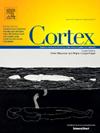早期视觉皮层在物体和位置之间转移视觉注意的神经动力学
IF 3.3
2区 心理学
Q1 BEHAVIORAL SCIENCES
引用次数: 0
摘要
基于位置和基于对象的注意对感觉加工的影响大多是孤立的研究,使它们之间的关系不太清楚。在脑电图实验中,采用概率空间线索任务研究了基于位置和基于物体的注意的时间动态,以测试同一物体上两个位置的感觉增强在时间上的差异。刺激包括两个垂直矩形/条填充随机噪声模式。每个矩形由两个闪烁的圆点云叠加,以引发标记每个物体两端的稳态视觉诱发电位(ssvep)。一个中心提示指向杆上一个(单提示)或两个(双提示)与任务相关的位置。目标出现在提示位置的概率要高得多,而出现在未提示位置的概率要低得多。未提示位置与提示位置的距离相同(无人值守相同)或不同对象(无人值守不同)。我们重复了在未提示的物体(未提示的不同)处目标的反应时间比在未提示的物体(未提示的相同)处目标的反应时间更长。相对于提示前基线,SSVEP的振幅受到空间和基于物体的整合的显著调节。有趣的是,结果表明(a)与未提示位置相比,提示位置的SSVEP振幅更早增强,(b)提示位置的SSVEP振幅持续更高。这些结果与先前的研究一致,表明对象整合涉及到整合过程后的顺序激活和待参与属性的持续增强激活。本文章由计算机程序翻译,如有差异,请以英文原文为准。
Neural dynamics of shifting visual attention between objects and locations in early visual cortex
Effects of location- and object-based attention on sensory processing have been mostly studied in isolation leaving the relations between them less well understood. In an EEG experiment, temporal dynamics of location- and object-based attention were investigated with a probabilistic spatial cueing task to test temporal differences between sensory enhancement of two locations in one object. Stimuli consisted of two vertical rectangles/bars filled with a random noise pattern. Each rectangle was superimposed by two flickering clouds of dots to elicit steady-state visual evoked potentials (SSVEPs) that tagged the two ends of each object. A central cue pointed either to one (single cue) or to two (double cue) task-relevant locations on the bar. Targets occurred with a much higher probability on the cued location, and with a lower probability on uncued locations. Uncued locations were equidistant to the cued location either on the same object (unattended same) or the different object (unattended different). We replicated the finding of longer reaction times for targets at the uncued object (uncued different) compared to the uncued location of the cued object (uncued same). SSVEP amplitudes were significantly modulated by spatial and object-based integration relative to the pre-cue baseline. Interestingly, results indicated (a) an earlier enhancement of SSVEP amplitudes and (b) a sustained higher SSVEP amplitude for the cued compared to the uncued location of the same object. These results are in line with previous studies suggesting that object integration involves sequential activation and sustained enhanced activation of the to-be-attended attribute after the integration process.
求助全文
通过发布文献求助,成功后即可免费获取论文全文。
去求助
来源期刊

Cortex
医学-行为科学
CiteScore
7.00
自引率
5.60%
发文量
250
审稿时长
74 days
期刊介绍:
CORTEX is an international journal devoted to the study of cognition and of the relationship between the nervous system and mental processes, particularly as these are reflected in the behaviour of patients with acquired brain lesions, normal volunteers, children with typical and atypical development, and in the activation of brain regions and systems as recorded by functional neuroimaging techniques. It was founded in 1964 by Ennio De Renzi.
 求助内容:
求助内容: 应助结果提醒方式:
应助结果提醒方式:


